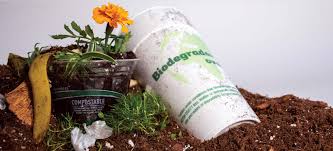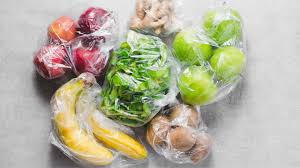Agro-packaging refers to the materials and techniques used to package agricultural products. Effective packaging is essential for maintaining product quality, extending shelf life, and ensuring safe transportation. As consumer demand for sustainability grows, agro-packaging solutions are evolving to include environmentally friendly materials and designs.
Importance of Packaging in Agriculture
1. Product Protection: Packaging protects agricultural products from physical damage, contamination, and spoilage during transportation and storage.
2. Extended Shelf Life: By controlling moisture, oxygen, and light exposure, packaging helps extend the freshness and longevity of products.
3. Branding and Marketing: Attractive packaging designs and branding elements help products stand out on shelves, making them more appealing to consumers.
4. Convenience for Consumers: Well-designed packaging can include features like resealable closures, making products easier to store and use.
5. Compliance and Information: Packaging provides a platform for labels that communicate important information such as nutrition facts, usage instructions, and regulatory compliance.
Types of Agro-Packaging Materials

1. Plastic Packaging: Widely used for its durability and flexibility, plastic is common for various agricultural products but poses environmental challenges if not managed properly.
2. Paper and Cardboard: These materials are eco-friendly and biodegradable, making them ideal for dry products and for brands prioritizing sustainability.
3. Glass Containers: Glass is often used for high-value products like oils and preserves. It is non-toxic, recyclable, and preserves flavor, though it can be heavy and fragile.
4. Metal Cans: Metal packaging is durable, tamper-proof, and suitable for long-term storage of products like canned fruits, vegetables, and dairy products.
5. Flexible Pouches: Lightweight and space-efficient, pouches are suitable for powders, grains, and other bulk products. They are available in various materials, including recyclable and compostable options.
Sustainable Packaging Options for Agriculture
1. Recycled Materials: Using recycled plastic, paper, or glass reduces resource consumption and environmental impact, supporting a circular economy.
2. Reusable Packaging: Solutions like crates, bins, and barrels can be reused multiple times, reducing waste and costs for producers and consumers.
3. Minimalist Packaging: Reducing the amount of material used in packaging minimizes waste and conserves resources while still providing adequate protection.
4. Edible Packaging: Made from food-grade ingredients, edible packaging can be consumed along with the product, eliminating waste entirely, though it has limited applications.
5. Bio-Based Plastics: Derived from renewable sources like corn or sugarcane, bio-based plastics reduce reliance on fossil fuels and typically have a smaller carbon footprint.
Read Also: 7 Medicinal Health Benefits of Sandalwood (Santalum album)
Biodegradable and Compostable Packaging

1. PLA (Polylactic Acid): Made from cornstarch, PLA is compostable and commonly used for packaging fresh produce and other perishables.
2. Bagasse: This by-product of sugarcane processing is compostable and ideal for containers, plates, and trays used for food packaging.
3. Starch-Based Packaging: Derived from corn or potato starch, this material is biodegradable and suitable for both rigid and flexible packaging options.
4. Cellulose Films: Produced from wood pulp, cellulose films are transparent, biodegradable, and suitable for fresh produce, baked goods, and more.
5. Mushroom Packaging: Made from agricultural waste and mycelium, mushroom packaging is compostable and suitable for cushioning delicate products.
Role of Packaging in Extending Shelf Life
1. Moisture Control: Packaging helps control moisture levels, which is essential for products like grains, cereals, and processed foods. Proper packaging reduces spoilage caused by mold and bacteria.
2. Protection from Oxygen: Many agricultural products, such as nuts and oils, are sensitive to oxygen. Packaging with oxygen barriers extends shelf life by preventing oxidation.
3. Light Protection: Some products, like oils and dairy, are sensitive to light, which can cause spoilage. Opaque packaging materials can prevent exposure to harmful light.
4. Temperature Regulation: Packaging designed to maintain specific temperatures prevents the degradation of products, particularly fresh produce, meat, and dairy.
5. Physical Protection: Packaging provides a barrier against damage during transport and handling, reducing product waste and maintaining freshness.
Packaging Solutions for Different Agricultural Products
1. Fresh Produce: Packaging solutions for fruits and vegetables often include breathable bags, trays, and films that allow for airflow to minimize spoilage and extend freshness.
2. Dairy Products: Milk, cheese, and yogurt require packaging that prevents contamination. Common solutions include aseptic cartons, plastic bottles, and glass containers.
3. Meat and Poultry: Vacuum-sealed and modified atmosphere packaging (MAP) are widely used for meat and poultry to inhibit microbial growth and retain color and flavor.
4. Grains and Cereals: Grains are often packaged in moisture-resistant bags or containers to protect them from pests and moisture, maintaining their quality during storage.
5. Oils and Fats: Oils are best stored in dark glass or metal containers to protect them from light and oxidation, which can degrade their quality.
Temperature-Controlled Packaging for Fresh Produce
1. Insulated Containers: These containers maintain the required temperature for perishable items, making them ideal for transporting fresh produce, dairy, and meats.
2. Gel Packs: Often used in combination with insulated containers, gel packs help maintain low temperatures during transport, keeping products fresh.
3. Phase Change Materials (PCMs): PCMs absorb and release thermal energy, maintaining a consistent temperature for temperature-sensitive products.
4. Vacuum Insulated Panels (VIPs): VIPs offer superior insulation and are ideal for packaging that needs to maintain specific temperatures for extended periods.
5. Refrigerated Packaging Units: These are specially designed units equipped with refrigeration to keep products cold. They are often used for large-scale or long-distance transport.
Read Also: 7 Medicinal Health Benefits of Gynostemma pentaphyllum (Southern Ginseng)
Innovations in Agro-Packaging Technology

1. Smart Packaging: Embedded with sensors, smart packaging can monitor freshness, temperature, and pH levels. This innovation is especially beneficial for perishable products.
2. Edible Packaging: Made from food-grade materials, edible packaging can be consumed with the product, minimizing waste, though it’s mainly applicable to products like certain fresh foods.
3. Biodegradable Films: Made from natural materials like starch, these films break down over time, reducing the environmental impact of plastic packaging.
4. Nano-Packaging: This technology incorporates nanoparticles into packaging materials, enhancing barrier properties against gases, moisture, and UV rays.
5. Antimicrobial Packaging: Designed to inhibit the growth of bacteria and fungi, this type of packaging helps extend the shelf life of fresh produce, meat, and dairy products.
Eco-Friendly Packaging Trends in Agriculture
1. Compostable Packaging: Compostable materials break down in natural environments, offering a sustainable option for products that need disposable packaging.
2. Recyclable Materials: Packaging made from materials that can be recycled, like certain plastics and metals, contributes to a circular economy, reducing the need for new resources.
3. Plant-Based Packaging: Made from materials like cornstarch, plant-based packaging is biodegradable and ideal for single-use items.
4. Minimalist Packaging: Reducing the amount of material used in packaging not only cuts costs but also minimizes environmental impact, which is appealing to eco-conscious consumers.
5. Reusable Packaging: Reusable packaging, like crates or glass containers, reduces waste and is cost-effective for transporting products over short distances.
Packaging Solutions for Exported Agricultural Products
1. Controlled Atmosphere Packaging (CAP): This packaging maintains specific gas levels inside, reducing spoilage for products like fruits, vegetables, and grains during long journeys.
2. Vacuum Sealing: By removing air, vacuum-sealed packaging extends the shelf life of products like nuts, grains, and meats, protecting them from oxidation and microbial growth during transport.
3. Modified Atmosphere Packaging (MAP): MAP adjusts the gas composition inside the packaging, often used for products like fresh produce, to slow down ripening and reduce spoilage.
4. Temperature-Controlled Containers: These containers regulate the temperature, ensuring that perishable goods like dairy, meat, and certain vegetables remain fresh throughout international shipping.
5. Moisture-Resistant Packaging: Moisture-resistant materials, such as plastic films or treated cardboard, are crucial for products like grains and dried fruits, preventing spoilage from humidity.
Role of Packaging in Reducing Post-Harvest Losses
1. Protection Against Physical Damage: Durable packaging materials help prevent bruising, crushing, or breakage during handling and transportation, which is vital for delicate products like fruits and vegetables.
2. Barrier to Pests and Contaminants: Sealed packaging prevents pests, bacteria, and fungi from contaminating agricultural products, which is especially important in countries with high pest activity.
3. Preservation of Freshness: Packaging that regulates oxygen, moisture, and temperature levels helps maintain the freshness of products, reducing waste from spoilage.
4. Extended Shelf Life: Packaging innovations, such as vacuum-sealing and MAP, extend the lifespan of products like meats and dairy, reducing losses from quick spoilage.
5. Minimizing Product Dehydration: Packaging can prevent dehydration in products like grains and seeds, keeping them viable for longer storage and transportation periods.
Challenges in Agricultural Packaging
1. High Costs: Advanced packaging technologies like temperature-controlled or modified atmosphere packaging can be expensive, impacting the overall cost of agricultural products.
2. Environmental Concerns: Many traditional packaging materials are not biodegradable, contributing to environmental pollution, which is an increasing concern for consumers and policymakers.
3. Packaging Waste: Single-use packaging often leads to high waste levels, especially with mass-produced agricultural products, putting a strain on waste management systems.
4. Maintaining Product Quality: Some packaging solutions may not effectively preserve the quality of certain products under extreme conditions, leading to a potential loss in value.
5. Compliance with Export Regulations: Different countries have strict regulations on packaging materials and methods for imported goods, which can complicate the packaging process for exporters.
Future of Agro-Packaging Solutions
1. Biodegradable Packaging: As sustainability becomes a priority, biodegradable packaging materials made from plant-based sources are likely to become more common, reducing the environmental impact of agricultural packaging.
2. Smart Packaging: This technology uses sensors to monitor freshness, temperature, and humidity, providing real-time data to improve the handling and storage of agricultural products.
3. Reusable Packaging Systems: Designed for multiple uses, reusable containers and crates can reduce waste and cut costs in the agricultural supply chain, particularly for local distribution.
4. Lightweight Materials: Developing lighter yet durable materials will help reduce shipping costs and energy consumption, supporting the push toward more eco-friendly shipping practices.
5. Circular Economy Packaging: Emphasis on a circular economy, where packaging is designed to be recycled or reused, is likely to reshape the agro-packaging industry, creating a more sustainable system overall.
Agricultural packaging plays a crucial role in maintaining the quality, safety, and marketability of products. While challenges like cost and environmental impact remain, innovations in packaging solutions are leading the industry toward a more sustainable future.
With advancements in biodegradable materials, smart packaging, and reusable systems, the agro-packaging sector is evolving to better meet the needs of consumers and exporters while minimizing its environmental footprint.
Do you have any questions, suggestions, or contributions? If so, please feel free to use the comment box below to share your thoughts. We also encourage you to kindly share this information with others who might benefit from it. Since we can’t reach everyone at once, we truly appreciate your help in spreading the word. Thank you so much for your support and for sharing!
Read Also: Waste Management Startups: The Future of Sustainable Waste Management
Frequently Asked Questions
We will update this section soon.

